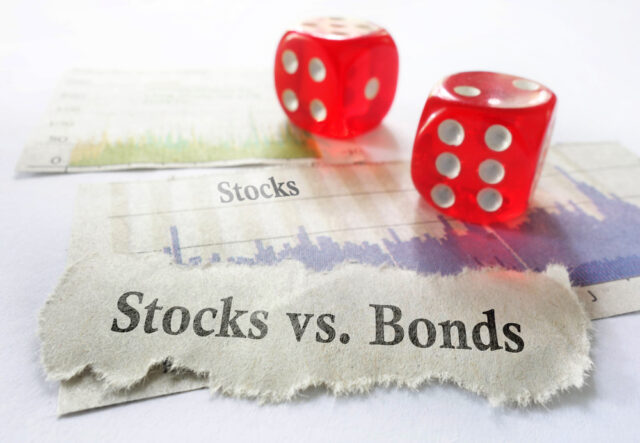In the world of investing, stocks and bonds often take centre stage. They represent two of the most common types of investments, each offering unique benefits and risks. As an investor, understanding stocks vs. bonds is key to building a diversified portfolio tailored to your financial goals.
Just like bananas, stocks and bonds in the financial market fluctuate in price over time, and these price movements can offer valuable insights into investing strategies.
Stocks vs. Bonds — the Basics
When you invest in stocks (aka equities), you’re buying a small piece of a company. As a shareholder, you stand to benefit from the company’s success in the form of an increased stock price and potential dividend payments.
Bonds, on the other hand, represent debt. Investing in bonds means you’re essentially loaning money to a corporation or government entity for a specified period. In return, you receive regular interest payments. At the end of the term, the bond issuer repays the principal.
Whether stocks or bonds are “better” depends on your personal financial goals, risk tolerance, and investment timeline.
Of Bananas, Stocks, and Bonds
Now that you have a fair idea of what stocks and bonds are, it’s time to bring the story of bananas into the discussion to illustrate some key investment principles.
Consider a time when bananas were quite expensive, costing $10 per kilogram. In such a scenario, your $10 could only buy 1 kg of bananas.
Fast forward to the present day: bananas are significantly cheaper at $2.50 per kilogram. Consequently, your same $10 can now buy you 4 kg of bananas. This scenario perfectly illustrates market volatility and purchasing power, much like stock market price fluctuations.
Over the past 15 years, the average price for a banana has increased by 2.5% each year, similar to how bonds provide steady, incremental returns over time. However, just like stocks, banana prices have had their highs and lows, with increases up to 40% in good years and decreases of 36% in unfavourable years. This represents the potential for high returns and substantial losses in the stock market.
Simultaneously, the quantity of bananas a person holds has been increasing by an average of 7.9% each year. Even in the worst years, banana holdings still rose by 2.5%, showcasing an investment strategy focused on long-term growth and compounding returns.
Both stocks and bonds have distinct roles in a well-balanced investment portfolio. Stocks offer potential for growth and higher returns, while bonds can provide steady income and act as a buffer against the volatility of the stock market.
Taking a Cue From Buffett
Consider the story of renowned investor Warren Buffett, who was criticised for holding too much cash between 2015 and 2020. Buffett waited for the right time to invest, much like waiting for the price of bananas to drop.
When the COVID-19 crisis caused market panic in 2020, the value of assets dropped significantly, just like bananas going on sale. Buffett took advantage of this situation and made strategic investments, maximising his returns. This highlights the importance of patience, market timing, and buying undervalued assets in one’s investment strategy.
The ultimate goal of investing, as demonstrated by Warren Buffett, is not just to buy bananas when they’re cheap but also to grow one’s holdings.
Investing is about balance, patience, long-term strategies, and knowing your investor style (but this is another story). Whether you’re buying bananas, bonds, or equities, the principles remain the same — look for good value, invest for growth, and don’t be afraid to wait for the right opportunity.
If this article has inspired you to think about your own unique situation and, more importantly, what you and your family are going through right now, please contact your advice professional.
(Feedsy Exclusive)





